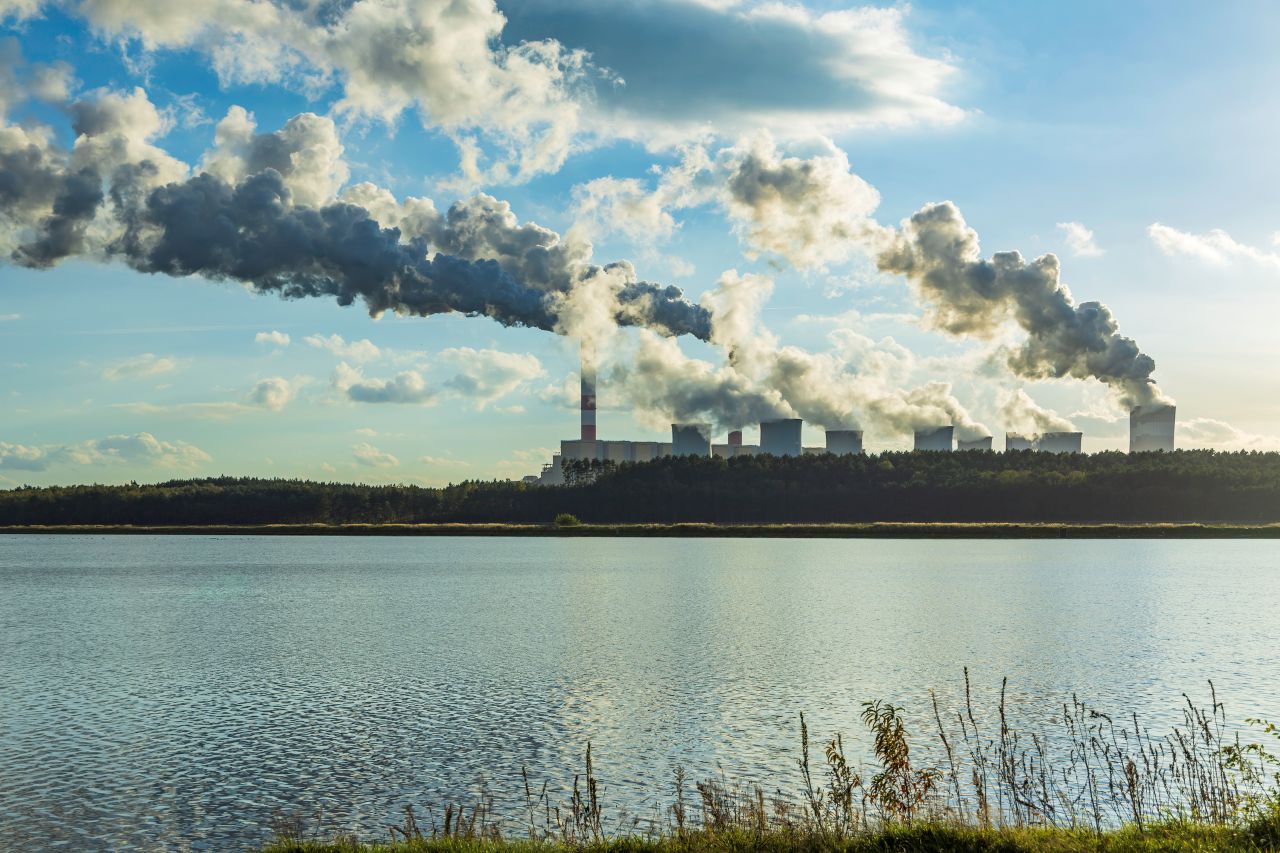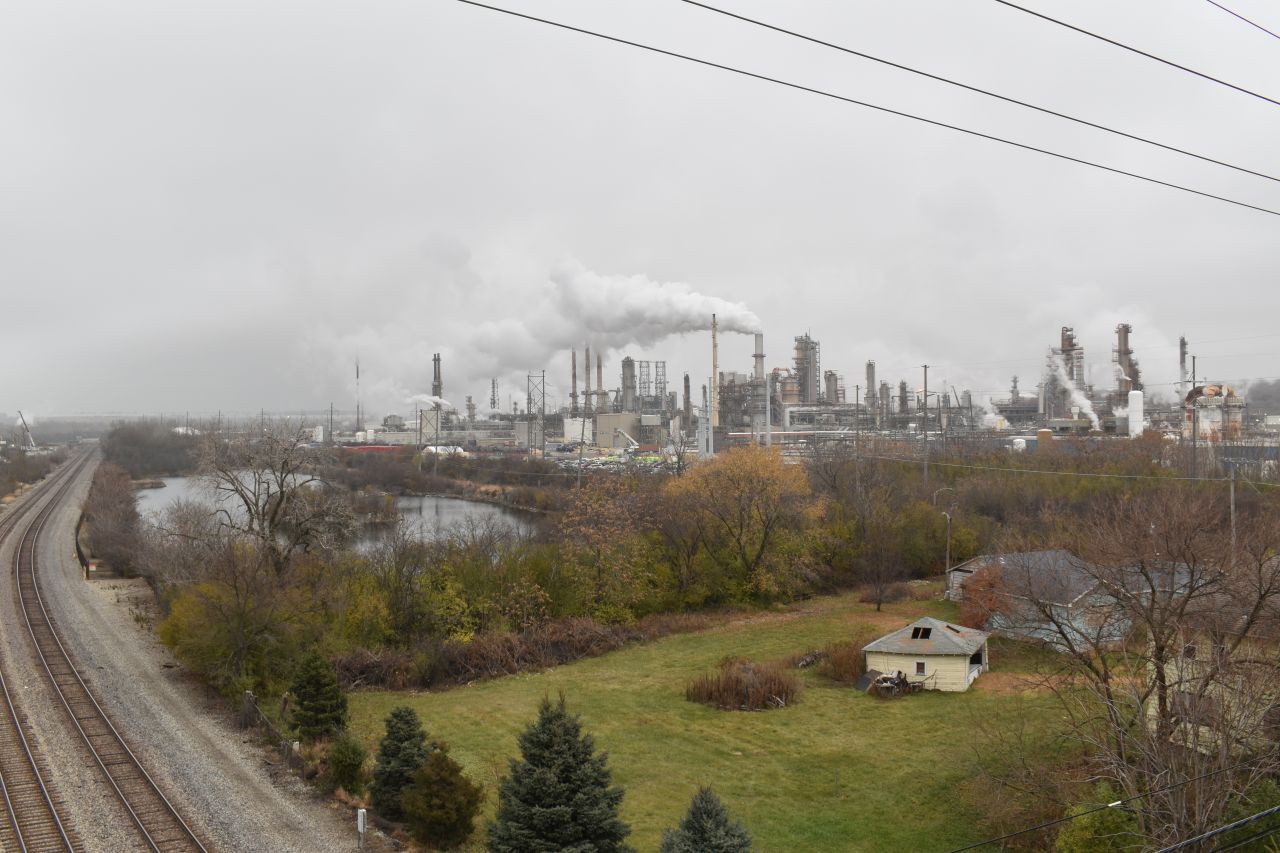The U.S. dominated the global oil and gas industry in 2023 despite pledges about clean energy

Overall, 2023 was a year of opposing trends in the U.S. oil and gas industry under a Biden Administration that both launched unprecedented policies to speed the transition to cleaner energy and also opened the door for record-setting fossil fuel production.
Last year, the country became the world’s largest producer of oil and maintained its status as the top producer of natural gas, while also becoming the world’s largest gas exporter.
This growth came despite claims by the energy industry and Republicans that the Biden Administration would stifle American energy production through a “radical anti-fossil fuel energy policy” and “sweeping regulatory agenda,” in the words of the Heritage Foundation, a leading conservative think tank.
The expansion of drilling and oil and gas exports from the U.S. also confounded many climate and environmental justice advocates. Many have criticized Biden’s policies that allow the U.S. to continue to climb in its rankings as a global producer of fossil fuels.
A prime example of the Biden Administration’s often contradictory stances on fossil fuel production can be seen in its opening and closing of lands for oil drilling in Alaska last year.
In March, the Biden Administration approved ConocoPhillips’ Willow Project in northwest Alaska, which is meant to produce more than a half billion barrels of oil in a vast area of untouched Arctic wilderness. However, six months after Willow’s approval, Biden banned drilling on 10 million acres on Alaska’s North Slope, also canceling leases issued under the Trump Administration in the Arctic National Wildlife Refuge.
“For those of us trying to limit [the Willow Project’s] spread and reach, it was by far the biggest disappointment of the year,” said Josh Axelrod, a senior policy advocate with the Natural Resources Defense Council, which joined a lawsuit intended to block the project. “But it has been good to see the administration turn around, and to some extent, try to limit the impact of that with their proposals and rules” for federal lands in Alaska.

exports from the U.S. rose last year. As of the first half of 2023, the majority of the gas went to Europe, which needed alternate supplies to replace Russian gas that fell under international sanctions after the country’s invasion of Ukraine in 2022. The war caused prices to escalate rapidly in 2022 and early 2023. Average gas prices for U.S. households have declined about 21 percent compared to last winter, largely due to a milder-than-expected early 2023 that left more gas in storage than expected.
But over the longer term, some experts say a rise in gas exports has done little to help U.S. consumers, who must now compete more directly with gas buyers in Europe and Asia.
“By further integrating the U.S. energy system into the global market, we've actually exposed U.S. consumers to potentially higher levels of volatility,” said Clark Williams-Derry, an energy finance analyst with the Institute for Energy Economics and Financial Analysis. “A cold snap in Asia or a war in Europe can affect what U.S. consumers are paying for gas.”
For oil and gas companies, 2023 also marked a year of major consolidations with ExxonMobil, Chevron, ConocoPhillips, and Occidental Petroleum all making multibillion-dollar deals to absorb smaller producers. These mergers allow these four companies to control nearly 60 percent of future oil production in the Permian Basin of West Texas and eastern New Mexico, the nation’s most productive oil field, according to Reuters.
"Consolidation is actively changing the landscape," Ryan Duman, director of Americas upstream research at energy consultancy Wood Mackenzie, told the news agency. "A select few companies will determine whether (production) growth will be strong, more stable or somewhere in between."
These trends for the oil and gas industry were accompanied by some significant milestones in 2023 in U.S. efforts to transition away from fossil fuels. In 2023, the U.S. broke a new record for most electric vehicles sold, with sales boosted in part by federal payments to consumers who buy electric cars and trucks that were included in the 2022 Inflation Reduction Act that was signed by President Biden. Electric vehicles made up nearly 18 percent of light-duty cars and trucks sold in the third quarter of 2023. The shift is part of an aggressive policy push by the Biden EPA to ensure that two-thirds of new passenger vehicles and a quarter or new heavy trucks sold in the U.S. are all-electric by 2032.
The Biden Administration announced seven hydrogen “hubs” that will receive a total of $8 billon in taxpayer money to create networks to produce and use hydrogen as a fuel. The administration hopes hydrogen, which burns without releasing carbon dioxide, will eventually help supplant petroleum in long-haul vehicles and heavy industry. However, only two of the hubs would only generate hydrogen using water and renewable energy; the rest would include hydrogen made using gas or nuclear energy.

An increase in renewable power and energy efficiency gains in the U.S. is keeping domestic demand for oil and natural gas relatively flat. But relatively flat domestic demand is being offset by increasing LNG exports, which will continue to be a profit center for oil and gas companies as they work quickly to build more terminals to send their products abroad.
In Southeast Texas, one massive LNG project is on hold after a federal appeals court in November rejected a permit for Sempra’s Port Arthur LNG near the Texas-Louisiana state line. Sempra has since appealed the ruling. However, at another site on the Gulf Coast, Freeport LNG resumed operations after a closure in 2022 because of an explosion and fire at the facility southeast of Houston.
Also in Texas, a state judge in December reversed a 2022 permit by the state’s environmental regulator that would have allowed the expansion of the Seahawk Oil Terminal on Lavaca Bay, north of Corpus Christi. The decision means the company must again navigate the state’s air permitting process before it can expand the terminal.
A handful of major oil and gas projects made significant progress in 2023, including the Mountain Valley Pipeline, a more than 300-mile gas pipeline through Pennsylvania, West Virginia, and Virginia. Environmental groups and local activists had fought for years to stop the pipeline, taking on its champion in Congress, West Virginia Sen. Joe Manchin.
But a provision included in the June 3 Fiscal Responsibility Act, a compromise between Democrats and Republicans to lift the federal debt limit, allowed the pipeline to proceed. After a flurry of legal challenges that followed, the U.S. Supreme Court cleared the way in July for construction to resume. A subsidiary of Equitrans, the pipeline’s developer, said in financial disclosures last week that construction on the project is almost finished.
“This was a project that was headed directly towards cancellation,” said Patrick Grenter, director of the Sierra Club’s Beyond Dirty Fuels campaign. “And then the Fiscal Responsibility Act happened.”
The year’s most significant regulatory change affecting the industry came in early December, when the Environmental Protection Agency issued a long-awaited final rule meant to curb methane emission from oil and gas wells, pipelines, and other sources. Methane is a greenhouse gas with more than 80 times the potency of carbon dioxide over a 20-year period that has been measured leaking from a vast array of equipment used in oil and gas production.
The EPA expects the new rule to prevent 58 million tons of methane emissions from entering the atmosphere from 2024 to 2038, an amount roughly equivalent to all of the carbon dioxide produced by U.S. power plants in a year. It will also stop the release over that time period of 16 million tons of volatile organic compounds that contribute to smog pollution and 590,000 tons of toxic air pollution, including cancer-causing chemicals like benzene and toluene.
“On day one, President Biden restored America’s critical role as the global leader in confronting climate change, and today we’ve backed up that commitment with strong action, significantly slashing methane emissions and other air pollutants that endanger communities,” EPA Administrator Michael Regan said in a statement accompanying the final rule.
The rule was announced as countries around the world met in Dubai for the COP28 climate summit. With nearly 2,500 industry lobbyists attending a conference hosted by a major oil- and gas-producing country, many climate and environmental justice advocates were skeptical. The talks ended with an unenforceable agreement pledging a “transition away from fossil fuels in energy systems” and to create a fund to assist small and developing countries who are more vulnerable to climate change.
The U.S., among the world’s top emitters, agreed to contribute $17.5 million to the fund. That was small compared to $109 million pledges from France and Italy, $100 million from the United Arab Emirates and Germany, and at least $51 million from the UK.
The U.S. has previously pledged to eliminate carbon pollution from its electricity system by 2035 and achieve net-zero emissions by 2050. Whether it continues to progress towards its climate goals largely hinges on the results of the 2024 presidential election. The race looks to be a rematch between Biden and former President Donald Trump, who this week easily won the Republican caucus in Iowa.
Most advocates say that while Biden has not been perfect on clean energy, a second Trump Administration would threaten any progress made in reducing pollution from oil and gas and fighting climate change.
“I think this administration has generally been focused very much on climate policy, even as they continue to support oil and gas to a pretty significant extent,” said Axelrod of NRDC. “Under another administration that has different goals, all of that is a 180-degree shift. So we would expect climate policy to be constantly under attack and those investments to either be stopped or rolled back.”















